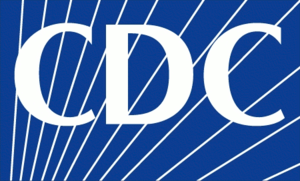| English: Logo of the Centers for Disease Control and Prevention, an agency within the United States Department of Health and Human Services. White on blue background with white rays but no white “burst”. No detailed wording. (Photo credit: Wikipedia) |
Vital Signs published the first Tuesday of each month
If you are a regular reader of our blog, then you know we often cover the Centers for Disease Control and Prevention’s (CDC) monthly Vital Signs report. According to the CDC’s web site Vital Signs:
…is a call to action each month concerning a single, important public health topic. The program consists of several parts, including (1) an MMWR Early Release the first Tuesday of every month; (2) A professionally designed Fact Sheet for consumer audiences, a dedicated website that mirrors the Fact Sheet on the topic; (3) a media release; and (4) a series of announcements via social media tools (Twitter, Facebook, etc.) CDC believes that by focusing on a single topic using multiple media devices, the states might better identify these health problems in their area and work towards their improvement. Vital Signs will be released the first Tuesday of every month.
CDC reports: Prescription Painkiller Overdoses ~ A growing epidemic, especially among women
The headline is startling, but the statistics supporting the headline could be considered numbing. Weigh the following facts:
- Nearly 48,000 women died of prescription painkiller overdoses between 1999 and 2010.
- Deaths from prescription painkiller overdoses among women have increased more than 400% since 1999, compared to 265% among men.
- For every woman who dies of a prescription painkiller overdose, 30 go to the emergency department for painkiller misuse or abuse.
For your convenience, here is a link to the CDC’s Vital Signs pdf which outlines the statistics, the problem, the risks, and what can be done about this growing epidemic.
How the prescription painkiller problem affects women differently than men
- Women are more likely to have chronic pain, be prescribes prescription painkillers, be given higher doses, and use them for longer time periods than men
- Women may become dependent on prescription painkillers more quickly than men.
- Women may be more likely than men to engage in “doctor shopping” (obtaining prescriptions from multiple prescribers).
- Abuse of prescription painkillers by pregnant women can put an infant at risk.
CBS News covers the CDC’s Vital Signs report
If you are having trouble viewing the video, you can see it here.
Treating prescription drug addiction
Here at Cottonwood Tucson we treat many patients who have become addicted to prescription pain medication. When a person has been abusing several dependence-causing drugs, the detoxification process can become complicated. Our medical providers have years of experience in safely managing complex detoxification and are able to help our patients to negotiate the withdrawal process safely and with a minimum of discomfort. Once this is done, our treatment team will work with the patient to explore root causes of physical and emotional pain and help them find more adaptive ways of managing distress.








